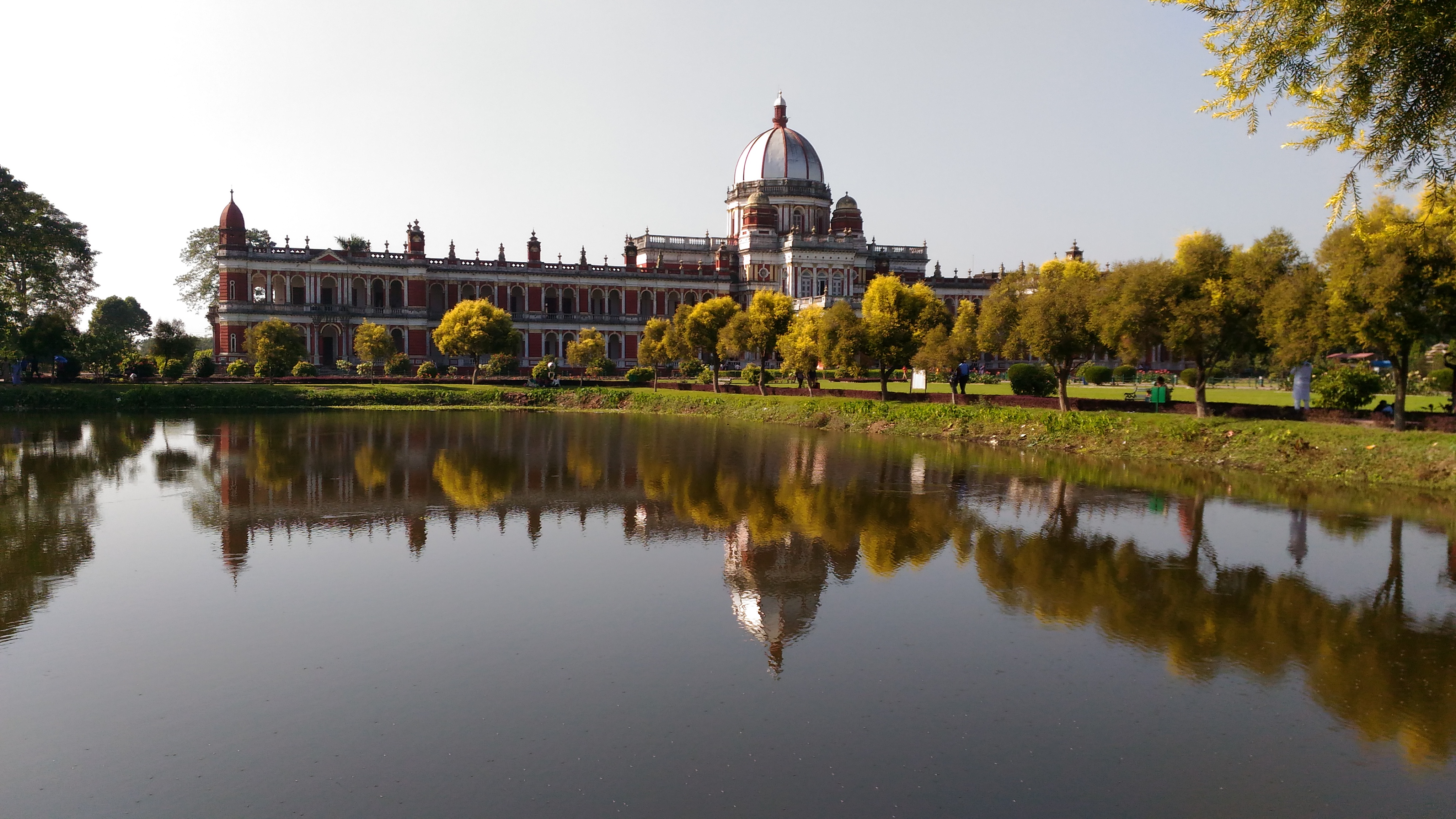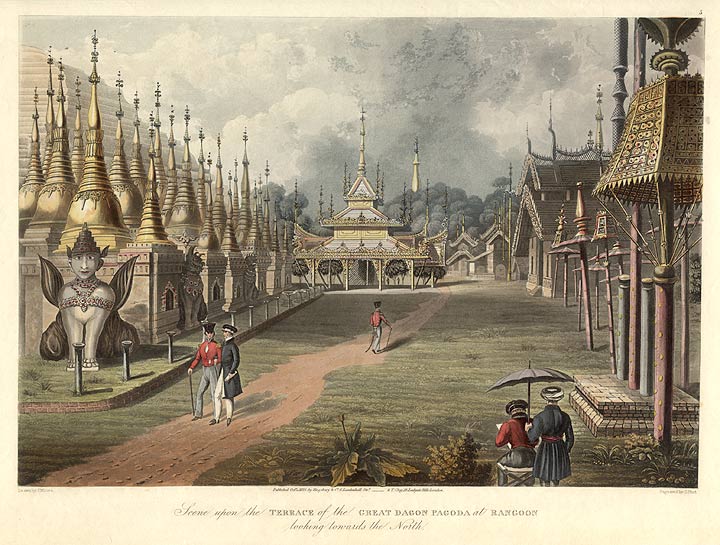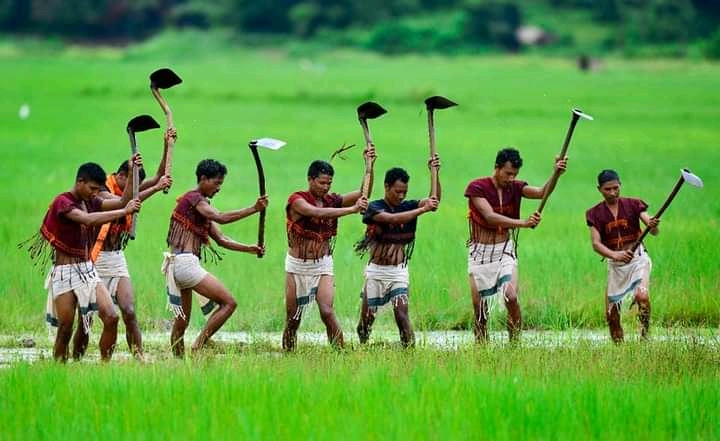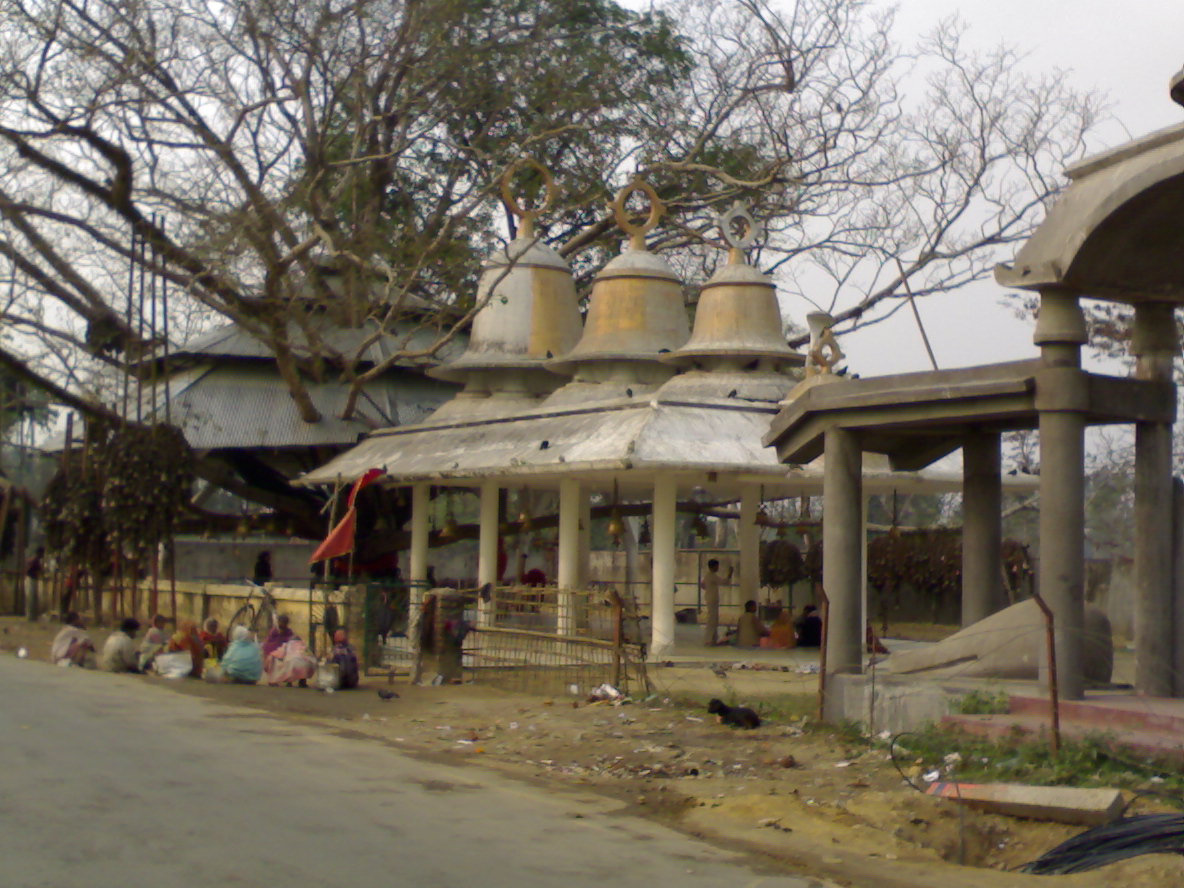|
Tamresari Temple
Tamreswari temple (also Dikkaravasini) is a temple for the tribal goddess called Kecaikhati is situated about 18 km away from Sadiya in Tinsukia district, Assam, India. The temple was in the custody of non-Brahmin tribal priests called Deoris. Some remains suggest that a Chutiya king built a wall or the temple itself in the year 1442. There were four different kinds of Deori priest who looked after the temple. The Bar Bharali and the Saru Bharali collected dues of the temple and provides animals for sacrifice. The Bar Deori (Deori Dema) and the Saru Deori (Deori Surba) performs the sacrifice and sung hymns. The temple was dedicated to Kechaikhati/Pishasi (''kechai'' means ''raw'' and ''khati'' means ''eat''), a powerful tribal deity or the Buddhist deity Tara, commonly found among different Bodo-Kachari groups. The worship of the goddess even after coming under Hindu influence was performed according to her old tribal customs. The temple was abandoned during t ... [...More Info...] [...Related Items...] OR: [Wikipedia] [Google] [Baidu] |
Assam
Assam (, , ) is a state in Northeast India, northeastern India, south of the eastern Himalayas along the Brahmaputra Valley, Brahmaputra and Barak River valleys. Assam covers an area of . It is the second largest state in Northeast India, northeastern India by area and the largest in terms of population, with more than 31 million inhabitants. The state is bordered by Bhutan and Arunachal Pradesh to the north; Nagaland and Manipur to the east; Meghalaya, Tripura, Mizoram and Bangladesh to the south; and West Bengal to the west via the Siliguri Corridor, a strip of land that connects the state to the rest of India. Assamese language, Assamese and Bodo language, Bodo are two of the official languages for the entire state and Meitei language, Meitei (Manipuri language, Manipuri) is recognised as an additional official language in three districts of Barak Valley and Hojai district. in Hojai district and for the Barak valley region, alongside Bengali language, Bengali, which is also ... [...More Info...] [...Related Items...] OR: [Wikipedia] [Google] [Baidu] |
Koch Dynasty
The Koch dynasty (; 1515–1949) ruled parts of eastern Indian subcontinent in present-day Assam and Bengal. Biswa Singha established power in the erstwhile Kamata Kingdom which had emerged from the decaying Kamarupa Kingdom. The dynasty came to power by overthrowing the Baro-Bhuyans of the region, who had previously ended the brief rule established by the invader Alauddin Hussain Shah. The dynasty split into three among the descendants of Biswa Singha's three sons: two antagonistic branches Koch Bihar and Koch Hajo and a third branch at Khaspur. Koch Bihar aligned with the Mughals and the Koch Hajo branch broke up into various sub-branches under the Ahom kingdom. Koch Bihar became a princely state during British rule and was absorbed after Indian independence. The third branch at Khaspur (Khaspur kingdom) was absorbed completely into the Kachari kingdom. Raikat is a collateral branch of the Koch dynasty that claim descent from the Sisya Singha, the brother of Bisw ... [...More Info...] [...Related Items...] OR: [Wikipedia] [Google] [Baidu] |
Statue In Tamreswari Temple
A statue is a free-standing sculpture in which the realistic, full-length figures of persons or animals are carved or cast in a durable material such as wood, metal or stone. Typical statues are life-sized or close to life-size. A sculpture that represents persons or animals in full figure, but that is small enough to lift and carry is a ''statuette'' or figurine, whilst those that are more than twice life-size are regarded as ''colossal statues''. Statues have been produced in many cultures from prehistory to the present; the oldest-known statue dating to about 30,000 years ago. Statues represent many different people and animals, real and mythical. Many statues are placed in public places as public art. The world's tallest statue, ''Statue of Unity'', is tall and is located near the Narmada dam in Gujarat, India. Colors Ancient statues often show the bare surface of the material of which they are made. For example, many people associate Greek classical art with white marb ... [...More Info...] [...Related Items...] OR: [Wikipedia] [Google] [Baidu] |
Khamti People
The Tai Khamti ( Khamti: ), also known as the Hkamti Shan (; ; ), or simply as Khamti, are a Tai ethnic group of India, China and Myanmar. The Tai-Khamti are followers of Theravada Buddhism. The Tai-Khamti have their own script for their language, known as 'Lik Tai', which originated from the Shan (Tai) script of Myanmar. Their mother tongue is known as Khamti language. It is a Tai language, closely related to Thai and Lao. According to 2001 census of India, the Tai Khamtis have a population of 12,890. In Myanmar their total population is estimated at 200,000 people. The Tai Khamtis who inhabit the region around the Tengapani basin of Arunachal Pradesh were descendants of migrants who came during the eighteenth century from the Shan region of Hkamti Long, in the western source of the Irrawaddy River Valley. Distribution They are located in Hkamti Long, Mogaung and Myitkyina regions of Kachin State as well as Hkamti District of Sagaing Division of Myanmar. In India, ... [...More Info...] [...Related Items...] OR: [Wikipedia] [Google] [Baidu] |
Myanmar
Myanmar, officially the Republic of the Union of Myanmar; and also referred to as Burma (the official English name until 1989), is a country in northwest Southeast Asia. It is the largest country by area in Mainland Southeast Asia and has a population of about 55 million. It is bordered by India and Bangladesh to its northwest, China to its northeast, Laos and Thailand to its east and southeast, and the Andaman Sea and the Bay of Bengal to its south and southwest. The country's capital city is Naypyidaw, and its largest city is Yangon (formerly Rangoon). Early civilisations in the area included the Tibeto-Burman-speaking Pyu city-states in Upper Myanmar and the Mon kingdoms in Lower Myanmar. In the 9th century, the Bamar people entered the upper Irrawaddy River, Irrawaddy valley, and following the establishment of the Pagan Kingdom in the 1050s, the Burmese language and Culture of Myanmar, culture and Buddhism in Myanmar, Theravada Buddhism slowly became dominant in the co ... [...More Info...] [...Related Items...] OR: [Wikipedia] [Google] [Baidu] |
Konbaung Dynasty
The Konbaung dynasty (), also known as the Third Burmese Empire (တတိယမြန်မာနိုင်ငံတော်), was the last dynasty that ruled Burma from 1752 to 1885. It created the second-largest empire in history of Myanmar, Burmese history and continued the administrative reforms begun by the Toungoo dynasty, laying the foundations of the modern state of Burma. The reforms, however, proved insufficient to stem the advance of the British Empire, who defeated the Burmese in all three Anglo-Burmese Wars over a six-decade span (1824–1885) and ended the millennium-old Burmese monarchy in 1885. Pretenders to the dynasty claim descent from Myat Phaya Lat, one of Thibaw's daughters. An expansionist dynasty, the Konbaung kings waged campaigns against the Mizo Chieftainship, Lushai Hills, Möng Mao, Manipur, Assam, Kingdom of Mrauk U, Arakan, the Mon people, Mon kingdom of Restored Hanthawaddy Kingdom, Pegu, Siam, and the Qing dynasty of China—thus establis ... [...More Info...] [...Related Items...] OR: [Wikipedia] [Google] [Baidu] |
Suhitpangphaa
Suhitpangphaa also Gaurinath Singha ( – 19 December 1794), was the 35th king of Ahom kingdom who reigned from 1780–1794. His reign is marked by the rise of the Moamoria rebellion and the decentralization of Ahom power. He was forced to flee from his capital owing to the rebels, he is characterized as weak, incapable, and a cruel ruler whenever intoxicated with opium where most of the power and influence remained over his nobles. He was the son of the previous reigning king Lakshmi Singha and the grandson of Rudra Singha, he was only fifteen years of age when he ascended to the throne, with no formal training or experience. Reign Lokenath Gohain after the death of Lakshmi Singha, ascended to the throne in 1780 and assumed the Hindu name of Gaurinath Singha and Ahom name of Suhitpangphaa. His first act as king was the mutilation of various ex-Ahom princes, to secure his post. In April 1782, the Moamoria rebels made a bold attack on the dual capitals, eventually, th ... [...More Info...] [...Related Items...] OR: [Wikipedia] [Google] [Baidu] |
Dimasa Kingdom
The Dimasa Kingdom also known as Kachari kingdom was a late medieval/early modern kingdom in Assam, Northeast India ruled by Dimasa kings. The Dimasa kingdom and others ( Kamata, Chutiya) that developed in the wake of the Kamarupa kingdom were examples of new states that emerged from indigenous communities in medieval Assam as a result of socio-political transformations in these communities. The British finally annexed the kingdom: the plains in 1832 and the hills in 1834. This kingdom gave its name to undivided Cachar district of colonial Assam. And after independence the undivided Cachar district was split into three districts in Assam: Dima Hasao district (formerly ''North Cachar Hills''), Cachar district, Hailakandi district. The Ahom Buranjis called this kingdom ''Timisa''. In the 18th century, a divine Hindu origin was constructed for the rulers of the Kachari kingdom and it was named Hidimba, and the kings as Hidimbesvar. The name Hiḍimbā continued to be used ... [...More Info...] [...Related Items...] OR: [Wikipedia] [Google] [Baidu] |
Mech People
The Mech (spelled ''Meche'' in Nepal; pronounced /mes/ or /meʃ/) is an ethnic group belonging to the Bodo-Kachari group of peoples. It is one of the scheduled tribes of India, listed both in West Bengal and Assam, India. They inhabit West Bengal, Nepal, Assam and Nagaland."Mech Kachari community of Nagaland celebrates post-harvest festival" ''ANI News'' Language Meche or Mech language is spoken in Jhapa district of Nepal and it belongs to Boro-Garo subgroup of Tibeto-Burman family. It is usually considered to be same language as Boro language spoken in Assam. However, it along with Boro language of northern West Bengal form western dialects of Boro language.< ...
|
Tiwa (Lalung)
The Tiwa people (Also known as Lalung) is a Tibeto-Burmese ethnic group primarily inhabiting the Northeast Indian states of Assam, Meghalaya, Arunachal Pradesh, Manipur and Nagaland, and some parts of neighbouring Bangladesh and Myanmar. A striking peculiarity of the Tiwa is their division into two sub-groups, Hills Tiwa and Plains Tiwa. The founder of Tiwa community is Pha Poroi “Indrosing Dewri” who has contributed a lot to the construction of Tiwa society. He also wrote the Tiwa national anthem called - O Angé Tiwa Tosima. Etymology They were known as ''Lalungs/Lalong/Laleng'' in the Assamese Buranjis and in Colonial literature and in the Constitution of India, though members of the group prefer to call themselves Tiwa (meaning "the people who were lifted from below"). Some of their neighbours still call them Lalung. Origin According to Bishnu Prasad Rabha, the Tiwas are originally the Pator-goya clan of the ethnic Deori people. He said that the word "Chutia" became " ... [...More Info...] [...Related Items...] OR: [Wikipedia] [Google] [Baidu] |
Tinsukia District
Tinsukia district is one of the 34 administrative districts in the state of Assam, India. The district headquarters is located at Tinsukia city. The district occupies an area of 3790 km2. History 16th century The area of the present district was an integral part of the Sutiya kingdom during the medieval period. After the defeat of the Sutiyas, the Ahoms appointed Prasengmung Borgohain as the Sadiya-Khowa Gohain to rule the region. 19th century The area of the present district was an integral part of the Sutiya kingdom during the medieval period. After the defeat of the Sutiyas, the Ahoms appointed Prasengmung Borgohain as the Sadiya-Khowa Gohain to rule the region. Later, the Matak kingdom rose in its place after the Moamoria rebellion. The older name of Tinsukia city was ''Bengmara''. It was later made the capital of the Motok Kingdom when a member of the former Sutiya royal family named Sarbananada Singha established his capital at Rangagarh situated in the ... [...More Info...] [...Related Items...] OR: [Wikipedia] [Google] [Baidu] |







